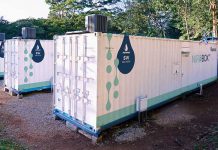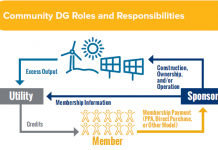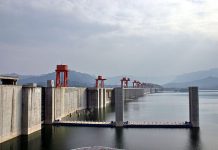There is a form of renewable energy which accounts for approximately one sixth of world electrical generation, and unlike wind and solar has a natural form of storage which costs a fraction of any other form of electricity storage, and has black start capability. Given all these positive characteristics, it may seem surprising that we have not yet written about it. The renewable energy in question is Hydropower, and the reason we’ve not covered it before is that the facilities are typically owned and run by governments or diversified utilities.
Until now, the only Hydropower investments I have been aware of were utilities which produce a high proportion of hydroelectric power, such as Idacorp (NYSE:IDA.) Just as regulated utilities do not bear the full risk of escalating fossil fuel prices, utility owners are unlikely to reap the full benefits of Hydropower as we transition to a clean energy economy. Both these risks and benefits tend to accrue to the customers of regulated utilities. The Economist had an article on what is probably the largest publicly traded hydropower utility, Russia’s partly state owned RusHydro. Unfortunately, as we have seen from the examples of Yukos, and more recently Mechel, Russia is a very risky place for investors.
As a investor, I am interested in participating in the upside of hydropower, but am not interested in letting Putin dictate my investment returns. To learn more about the industry in the hope of finding investment ideas, I recently attended Hydropower in Colorado, a technical seminar put on by AECOM Technology Corporation (NYSE:ACM), a global provider of professional technical and management support services to a broad range of markets, including transportation, facilities, environmental and energy. TCB AECOM and Boyle AECOM, the divisions putting on the seminar provides planning and engineering services to dam hydropower projects, which was why they were putting on the conference, where the typical attendee was a civil or mechanical engineer working for a water utility. I found the presentations of AECOM employees to be very informative, especially those on the real world challenges of getting a new hydropower project up and running.
Pumped Hydro storage
I’ve often written about aspects of electricity storage. Among storage technologies, the 800 pound gorilla is pumped hydropower (alternatively "pump hydro") storage. Pumped storage was built for spinning reserves (available power to meet short term surges in demand), and we have tens of gigawatts of capacity in the United States. Despite recent breakthroughs in storage for solar, and recent small-scale demonstrations of utility scale batteries, pumped hydropower storage is an existing technology which was first deployed in the 1890s in Italy and Switzerland, and has seen worldwide deployment since the second world war.
However, the US has not seen the construction of a new pumped storage facility since the 1980s. According to Blaine Dwyer of Boyle AECOM, there have been eleven permits for pumped storage issued by FERC since then, but none of the projects have been built, and the permits have since been rescinded. Issues which have prevented the construction of new pumped storage most likely include the lower differentials in peak and off peak power prices due to the rapid expansion of natural gas generation, as well as an increasingly organized and active opposition to any sort of new hydro by environmental groups.
With rapidly rising natural gas prices, as well as increasing penetration of intermittent renewables, we should see rising daily price differentials, which should greatly improve the economics of new pumped hydropower projects. According to Karl Kumli, a leading Colorado utilities and water lawyer who gave the presentation on the legal aspects of permitting, new pumped hydro projects (at least in Colorado) are likely to be limited to off-channel facilities by environmental concerns and existing water rights holders.
Surprises
I went to the seminar to learn about hydropower, a technology I had not previously investigated. While these have not yet become investment ideas, below are the observations I found more surprising or interesting.
- Hydro engineers seem surprised at the unpopularity of hydro in general, and there was a strong interest from most attendees in pumped hydro storage.
- There are many opportunities to add hydro generation to existing water facilities. Even wastewater flows and agricultural ditches can be opportunities. However, many of these opportunities will be non-dispatchable (if not intermittent), because the flows are managed for other purposes.
- Monthly data are not fine enough to fully determine the feasibility of a power project; the smoothing of flows significantly overstates expected power generation.
- There is a wide variety of different turbines available, with varying costs and efficiencies, suited to different flow profiles. The Francis turbine is the current workhorse of the industry, but the expected trend towards new hydro projects with smaller and less predictable/controllable flows will, in my opinion, lead to an increase in the use of Bulb turbines for fitting into existing pipes or channels, and cross-flow turbines for their low cost and ability to handle a broad range of flows.
- The industry’s bespoke model has left a gap for a cheap and simple low-efficiency turbine which could be mass produced for a wide variety of situations. It’s my guess that the legal challenges of permitting hydropower have led to this market situation; only projects which the government is behind and are likely to be very profitable are pursued, because only those are valuable enough to defray the legal costs. Put another way, given high legal costs, savings from a cheaper installation can make less difference on the overall economics of a project, leading the industry to pursue efficiency of power generation with more expensive turbines.
- Although a single large turbine is most efficient for any given flow, Multi-unit projects can help with feasibility in situations with significant flow variations over time.
- Legal: Exemptions are the way to go for licensing. Last forever, does not have to be renewed. This will likely lead to new projects being relatively small and designed to capture wasted energy in existing channels and pipes, rather than the construction of new dams.
- At least in Colorado, there is a large and growing amount of money available for hydropower projects within government entities. To date
, this money is largely untapped, despite the fact that it’s available at very low interest rates (2-4.5% for 20-30 yr loans.)
Investments
I am still pursuing my research into hydropower investments. The underlying theme has not changed. Since most new hydropower will be built by government entities, direct investment is not likely to be the most profitable option. This leaves investment opportunities in the suppliers of parts and services to hydropower projects. I do expect an increase in such projects, both small hydro and pumped hydro, so such suppliers should be able to ride the trend. As I investigate and invest in individual companies, I will write about them further.
Tom Konrad
DISCLOSURE: None.
DISCLAIMER: The information and trades provided here and in the comments are for informational purposes only and are not a solicitation to buy or sell any of these securities. Investing involves substantial risk and you should evaluate your own risk levels before you make any investment. Past results are not an indication of future performance. Please take the time to read the full disclaimer here.







I went through a bunch of utes a while ago to look at their generating capacity. Here’s a ranking of utes by hydro capacity.
The last half of the list have no hydro capacity whatsoever. The first 2 have a lot of nuke capacity, too.
PCG
EIX
CMS
AES
AYE
D
DTE
PPL
SO
EXC
TEG
FE
PGN
AEE
DUK
AEP
ETR
FPL
PEG
CEG
SRE
ED
XEL
CNP
POM
NI
TE
DYN
PNW
GAS
STR
Chris G-
Is this ranked in order of total capacity, or as a % of sales? For an investor, the second would be more useful (because a large company with only 10% hydro could easily have more hydro than a small pure-play company). Do you have %age numbers these utilities?
Hydropower: The Renewable Energy Elephant in the Room
There is a form of renewable energy which accounts for approximately
It’s ranked by % of generating capacity that is hydro relative to the company’s total generating capacity. So a company that is #10 on the list might actually have more nominal hydro capacity (in megawatts) than #1 the list but that would be because their total capacity including nuke, gas, and coal was much higher.
I did this generating capacity analysis as part of a broader analysis of the utilities index fund, XLU. I chose capacity in MW not % of sales. I’m not sure i understand your % of sales reasoning. These days a ute with 50% hydro & nuke is going to try to maximize production from those assets and then charge the consumer the natural gas peaker price. The point of my analysis was to compare new building costs to buying the XLU index.
The top 10 hydro ranking % are:
53%
22%
18%
12%
12%
10%
9%
8%
7%
6%
4%
This is hydro capacity as a % of total capacity from most recent 10k. It lacks precision but it was a small part of the idea.
I was unclear about the % of sales… I was contrasting hydro as a % of MWh generated vs. as a % of MWh sold (because of electricity bought on the market.) This also brings up the point of which is a better measure, Power (MW) or Energy (MWh)?
All of these are, as you say, very rough measures. For your purposes, comparing with new build, generation capacity is probably the best way to go.
Thanks that you mentioned this huge field of (the most) renewable energy. I actually am a researcher in this field, and one great way to invest in it is to invest in the companies that build the equipment, as equipment is constantly being renovated at hydro plants. GE was a big one, but is now owned by a Brazilian company, Alstom is another major player, as is Voith-Seimens, and of course good old ABB with the generator side of things. It’s really big in Scandinavia (and in fact sponsoring my PhD) with some major players with stock available including E. On (EONAF) and Vattenfall.
One other comment to make is that in the future, there isn’t really so much chance of major hydropower work within the USA due to environmental reasons and the extremely intense licensing requirements. However, everywhere outside the US has major potential, and especially in the third world (take a look at the dream of the Grand Inga Project), where the equipment providers really stand to make good business.
Thanks Greg… GE, ABB, and Siemens are all long time favorites of this blog… it’s too bad to hear GE sold their hydro division.
I agree about no major US projects… most projects will be small scale, capturing currently wasted energy from existing flows. But the question for investors is, is the trend likely to be faster than that which the market already expects. While new hydro will not be huge in comparison to the existing base, I expect the number of new projects to increase relative to that in recent years.